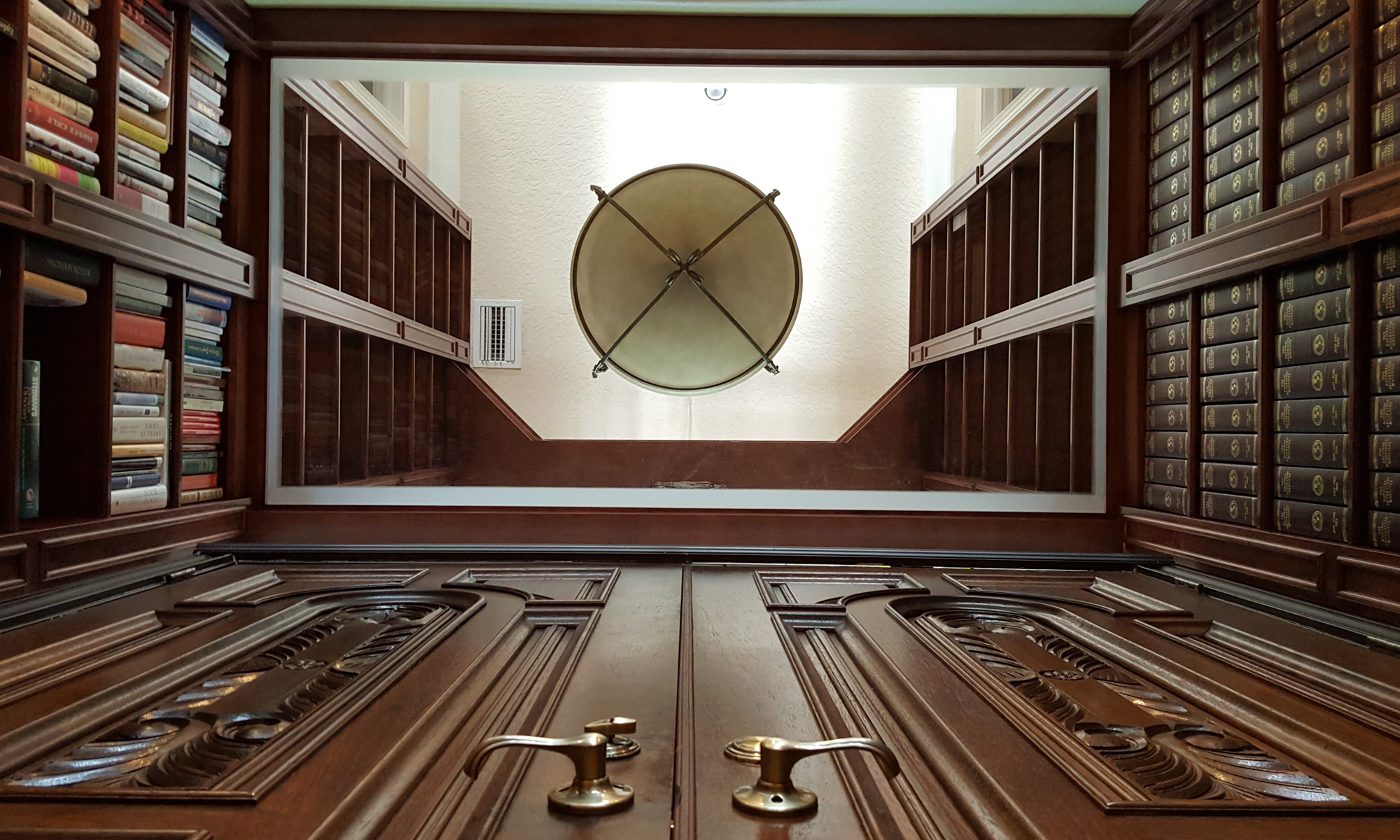I decided to do a test piece for the pockets I will be making for the knife display case. I’ve learned the value of test pieces from bitter experience. The extra time taken always seems to pay dividends as you figure out a process using a piece of scrap wood.
The first step was to trace the pattern of a knife onto a piece of 1/4″ plywood and onto a piece of scrap maple. I also drew a line on the pattern separating the thicker eagle head portion of the knife from the rest of the handle.
Using my scroll saw I cut out the eagle head portion of the pattern in the plywood. On the maple piece I hogged out the same portion using a 3/4″ forstner bit in my drill press. I set the drill press so that it would drill to a depth just slightly less of the final depth of the pocket.
Then, taking care to orientate it correctly, I attached the plywood to the back of the maple with double stick tape, and using a 3/4″ router bit and the Daisy Pin Router, I routed out as much of the pocket as I could.
Because of the diameter of the 3/4″ router bit I was not able to route out the area of the pocket at the eagle’s beak. So I switched to a 1/8″ router bit and also changed the guide pin in the Daisy Pin Router to 1/8″. With the smaller diameter bit I was able to access and rout out the area at the eagle’s beak.
I then removed the plywood from the maple test piece, and took it back to the scroll saw, where I cut out the rest of the pattern. I also took the maple piece back to the drill press and hogged out as much as I could with the forstner bit. You can see that portion of the pocket will not be as deep as the eagle head portion.
The 1/4″ plywood was taped to the back of the maple piece again, and I switched both the router bit and Daisy Pin Router guide pin back to 3/4″. Then the pocket was routed out. Because this section of the pocket was not as deep I did not have to do a plunge cut with the router. I simple placed the piece over the router bit in the deeper pocket, turned the router on and then moved the piece across to route out the shallower section.
The completed pocket with the knife sitting in it.
With a total of 19 pockets to create in the actual knife display case, it was worth taking the time to make a test piece and find the most efficient and accurate method.










One Reply to “Pockets for knife display case – test piece”
Comments are closed.